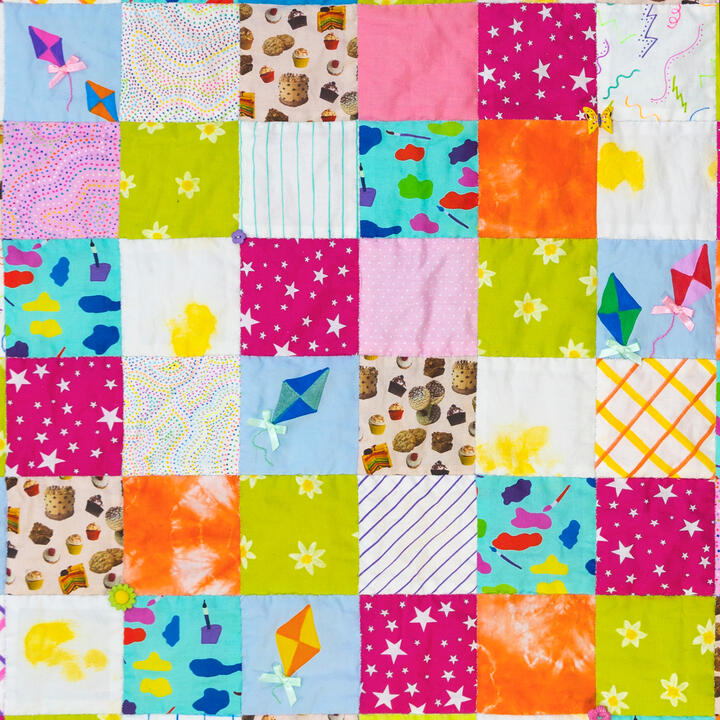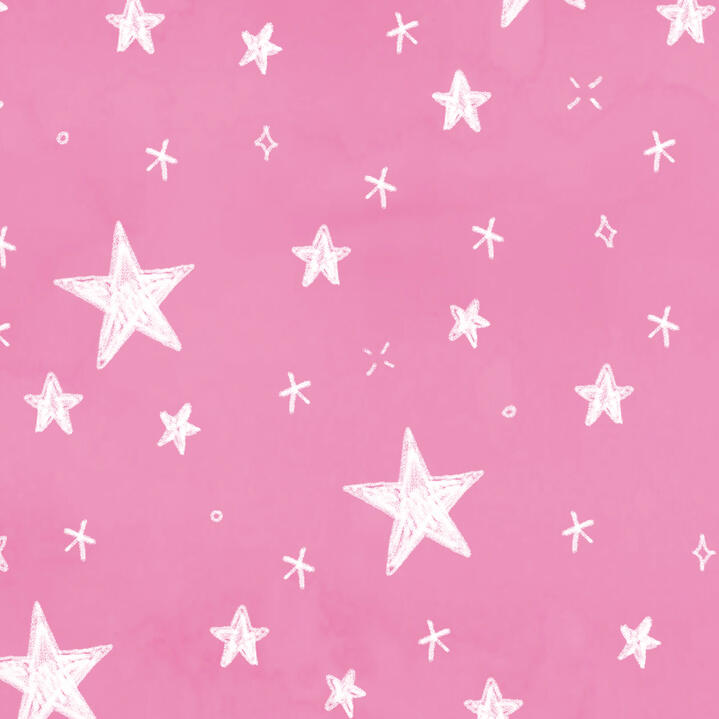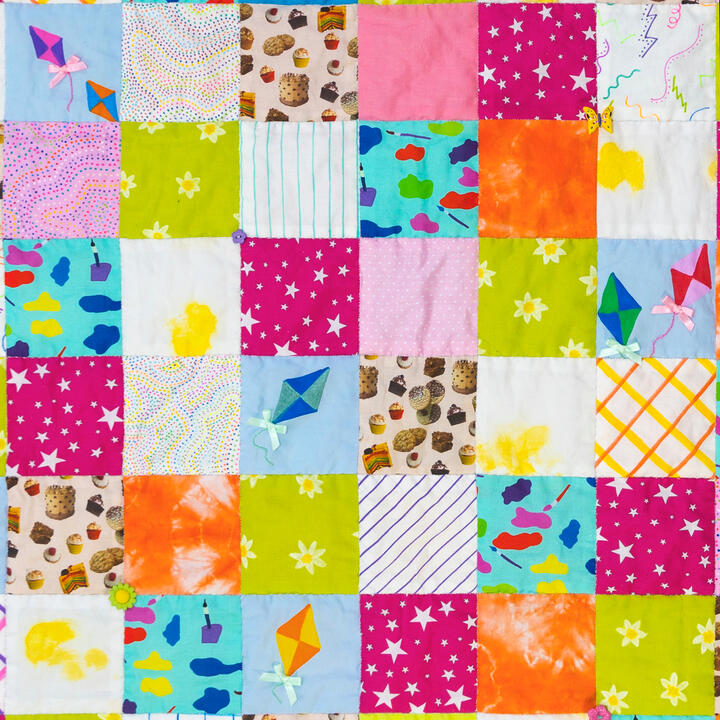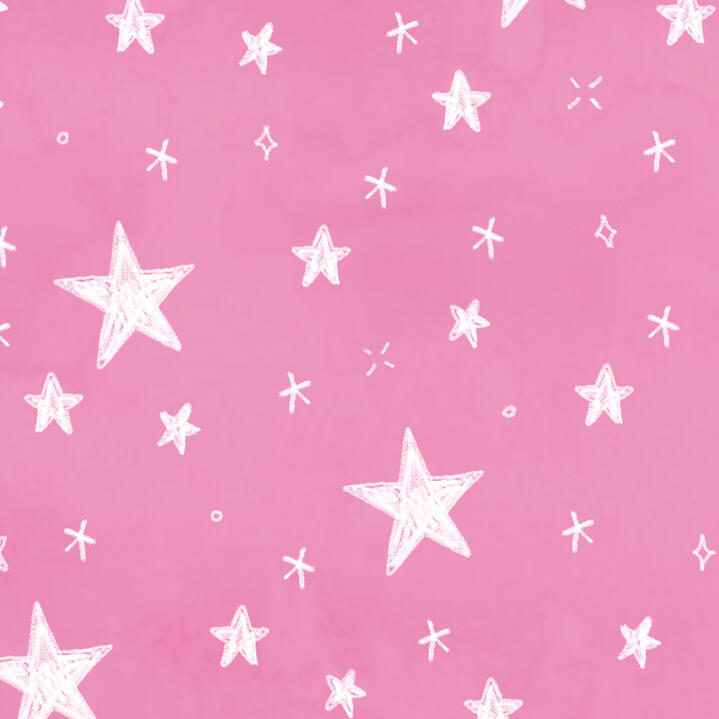Millie's Quilt
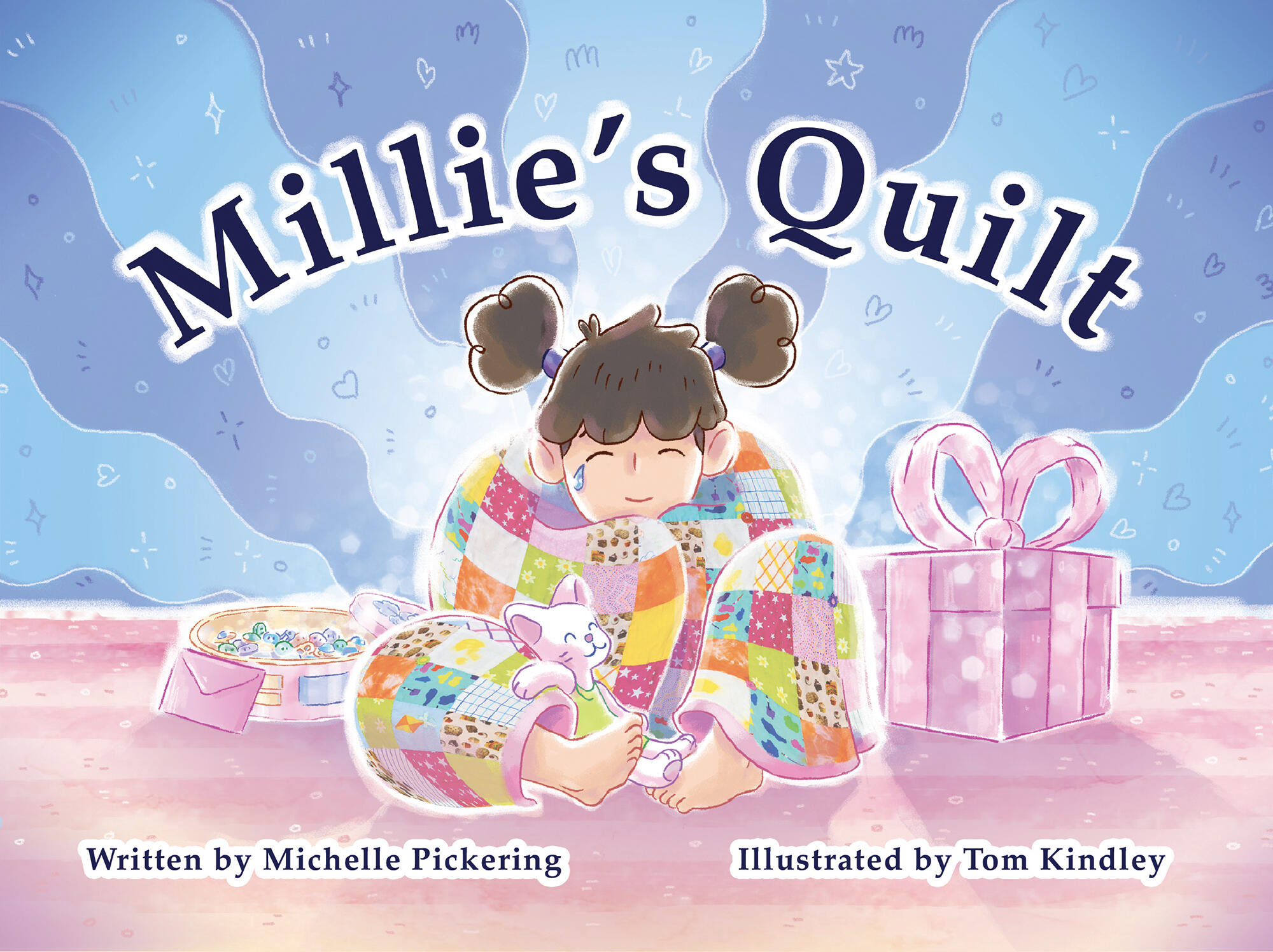
When Millie’s gran died, she left her a very precious gift, which captured her favourite memories in fabric.Discover the story behind the fabrics in this beautiful and heart-warming book.
Craft Ideas for Home
Over the coming months I’ll be adding more craft activities, linked to the book, that are suitable to do with your child/ren at home. I will also share different ways the activity can be adaptated according to your particular situation.The activities will use easy to access supplies, and will be geared to the primary age range, although they can easily be adapted, or indeed, led by older children.The story and the associated activities may provide opportunities to sensitively open conversations with children about loss and grief.Where I have used specific supplies, useful links will be provided where these can be purchased. I do not receive any commission from these suppliers.Click on the images or titles to download these print-ready activity sheets as PDFs.
Millie’s quilt is reversible, but it’s not the same on both sides.There are lots of differences, but here are a few suggestions to get you started!1. What can you see stitched on the front of the quilt that isn’t on the back?
2. Which fabric design is only on the front of the quilt?
3. Can you spot the two pairs of fabrics sewn next to each other on the back of the quilt?Enjoy finding all the other differences!
This easy colouring template can be printed on A4 to provide the opportunity for children to design and colour their own quilt. The activity can be adapted to include collage, using pictures from old magazines and a variety of craft materials, e.g., sequins, ribbons, scraps of fabric, to create a very pretty design.Younger children may find it easier to simply block colour each square as they learn to keep within the lines, and older children may like to create smaller designs within each square.
Craft Ideas for Schools
Over the coming months I’ll be adding a range of craft activities, linked to the book, that are suitable to do with your class or organisation. The book has a clear link to the PHSE curriculum, and many of the craft activities can be used with that as the main focus.The story and the associated activities may provide opportunities to sensitively open conversations with children about loss and grief.In terms of the wider curriculum, the story also highlights the use of pre-loved fabrics in the creation of the quilt; so, inclusion of some activities will also lend themselves to environmental projects, for example: tie-dying old shirts to make into cushions, small quilts, or other fabric projects. There is also an opportunity to highlight the impact of fast-fashion industry on certain countries and the part we can play to reduce this impact.For younger children, the use of an enlarged image of the quilt, can provide simple maths games of counting ‘how many’ of a particular fabric they can see, and a ‘spot the difference’ activity will be uploaded in this section of the website, as the quilt is reversible.Click on the images or titles to download these print-ready activity sheets as PDFs.
Millie’s quilt is reversible, but it’s not the same on both sides.There are lots of differences, but here are a few suggestions to get you started!1. What can you see stitched on the front of the quilt that isn’t on the back?
2. Which fabric design is only on the front of the quilt?
3. Can you spot the two pairs of fabrics sewn next to each other on the back of the quilt?Enjoy finding all the other differences!
This easy colouring template can be printed on A4 to provide the opportunity for children to design and colour their own quilt. Schools may also be able to print larger versions to design as a whole class or group.Younger children may find it easier to simply block colour each square as they learn to keep within the lines, and older children may like to create smaller designs within each square.A wide variety of colouring materials can be used, depending on what is available. The activity can be adapted to include collage, making the final piece more tactile, using pictures from old magazines and also by adding a variety of craft materials, e.g., sequins, beads, ribbons, scraps of fabric, to create very pretty designs.A class may also wish to design one square each, either on paper or cotton fabric, (an old bed sheet is ideal for this), which can later be collated into a single class quilt for wall display.
About the Book
Author: Michelle Pickering
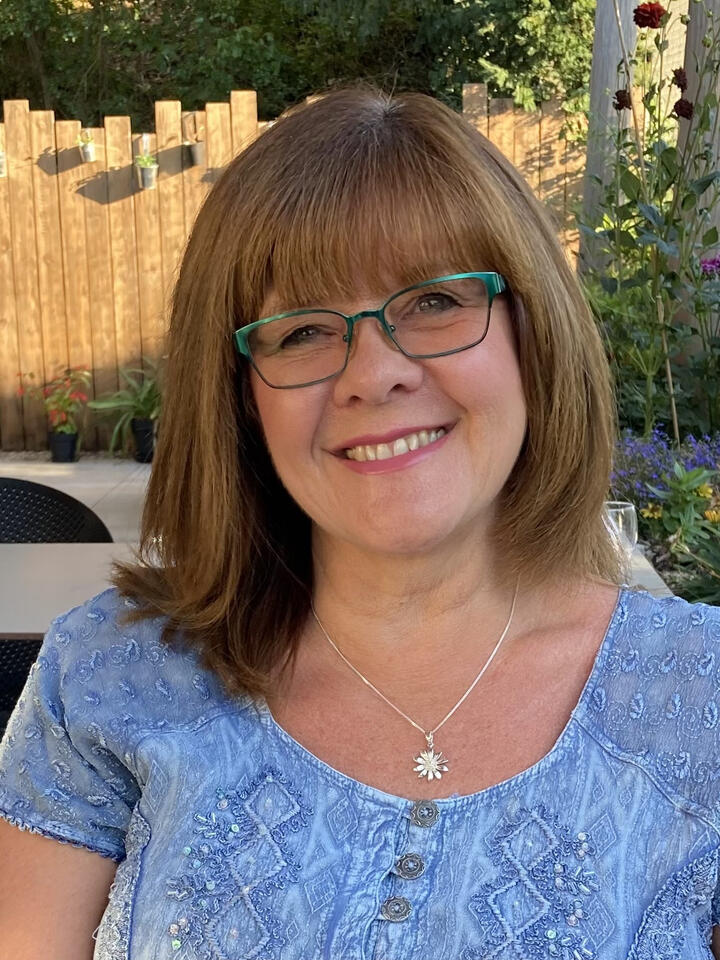
This book combines my love of reading and craft activities, together with a passion for supporting children, especially through difficult times in their lives. I have been involved in a range of voluntary activities with children throughout my life, from uniformed organisations, helping in schools and mentoring young people.I graduated from the Open University with a First-Class B.A. Honours Degree in July 2019, which I had been studying part-time alongside paid employment. The Children’s Literature Module was of particular interest, and started the idea in my mind to write this children’s picture book. My degree success encouraged me to pursue this dream, but it wasn’t until I decided to leave paid employment, that I was able to give more time to my book project.I had very clear ideas about Millie’s character, the overall structure of the book, and the type of illustrations I wanted, but my drawing skills are not the greatest, so this required the help of an illustrator, who was able to get inside my head and bring Millie and her story to life.
Illustrator: Tom Kindley
Tom Kindley is a freelance illustrator and graphic designer from Northumberland, UK. After graduating from Edinburgh University, he had various jobs in Graphic design, but always kept up with commissions in illustration. Now currently living in Newcastle Upon Tyne with his wife - Claire, little boy - Finn and little dog boy - Olly; he teaches children in the fundamentals of painting and illustration. When not working, he’s climbing up rocks and exploring nature.
Contact
Get in touch for workshops, readings and wholesale book orders
